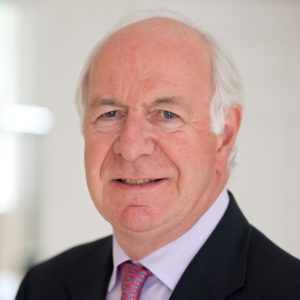medwireNews: A multigene sequencing panel has successfully identified one or more gene variants in up to one in six children with idiopathic short stature (ISS), researchers report in Endocrine Connections.
“Knowing the genetic basis of these patients’ short stature can allow precise genetic counselling and clinical follow-up”, say Alexander Jorge (Universidade de São Paulo, Brazil) and co-authors.
“It is particularly relevant to children harbouring variants that can support the indication or be a contraindication of [recombinant human growth hormone] therapy”, they write.
The team used a customised target sequencing panel to assess for alterations in genes associated with an ISS phenotype, such as those involved in the growth plate and the GHRH-GH-IGF1 pathway, as well as next-generation sequencing of the SHOX genomic and enhance regions, and copy number variant (CNV) analysis.
Of the 102 unrelated children in the study with a height standard deviation score (SDS) of –2 or less, 59 were retrospectively enrolled from an outpatient clinic and 43 were enrolled prospectively, with genetic analysis performed after their initial clinical and laboratory assessments, explain Jorge et al.
Of note, none of the children were born preterm or with low birthweight, and all were free from significant dysmorphic features, skeletal dysplasia, chronic disease, growth hormone deficiency and other conditions.
The majority of the children were boys (66%) and had familial short stature (59%), and 78% were prepubertal with an average age at first evaluation of 8.9 years. The average height SDS was –2.6, with 70% having a height SDS below –2.5, and 20% a height SDS of no more than –3.0. The average difference between bone and chronological age was –1.9 years.
Overall, the team identified eight pathogenic and 12 likely pathogenic heterozygous variants, including four CNVs, to give a diagnostic yield of 16.7%, with three of the 17 affected children having more than one pathogenic or likely pathogenic variant.
And there was a significantly higher diagnostic yield among children who had severe ISS, defined as a height SDS –3, than those with less severe ISS (35 vs 12%).
But there was no significant difference in the rate of positive markers for children with and without familial ISS (22 vs 9%), or with or without mild body disproportion (30 vs 14%), although 71% of children with a pathogenic or likely pathogenic variant had inherited it from a parent with short stature.
Fourteen children had an alteration to their growth plate genes, namely IHH (n=4), SHOX (n=3), FGFR3 (n=2), NPR2 (n=2), ACAN (n=2) and COL2A1 (n=1).
In addition to single nucleotide variants, the researchers found “an allelic imbalance suggesting mosaicism in one NF1 de novo mutation”, as well as three CNV heterozygous deletions in SHOX and a fourth “complex rearrangement involving the ACAN gene”.
A further five children carried variant forms of RAS-MAPK pathway genes, most commonly NF1 (n=2), and one child had an alteration to the GH-IGF1 axis gene GHSR.
Twelve children were found to have 13 variants of unknown significance (VUS) in one of four growth plate genes, two GH-IGF1 axis genes, and in NF1. One child had more than one such alteration, and another child with a VUS also had one pathogenic and one likely pathogenic variant.
The researchers observe that their diagnostic yield is higher than the average of 12.5% that has previously been reported for multigene sequencing for ISS, and suggest this may be, in part, attributed to the current study’s use of CNV analysis and the cohort “enrichment” of children with familial ISS.
“Based on the significant and progressive reduction of the costs of the genetic studies and their increasing diagnostic yield, we expect to reach the time when this diagnostic tool will be routinely offered in the assessment of children with ISS”, they conclude.
By Lynda Williams
medwireNews is an independent medical news service provided by Springer Healthcare Ltd. © 2022 Springer Healthcare Ltd, part of the Springer Nature Group


